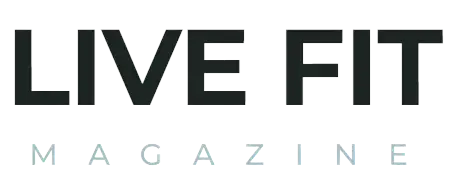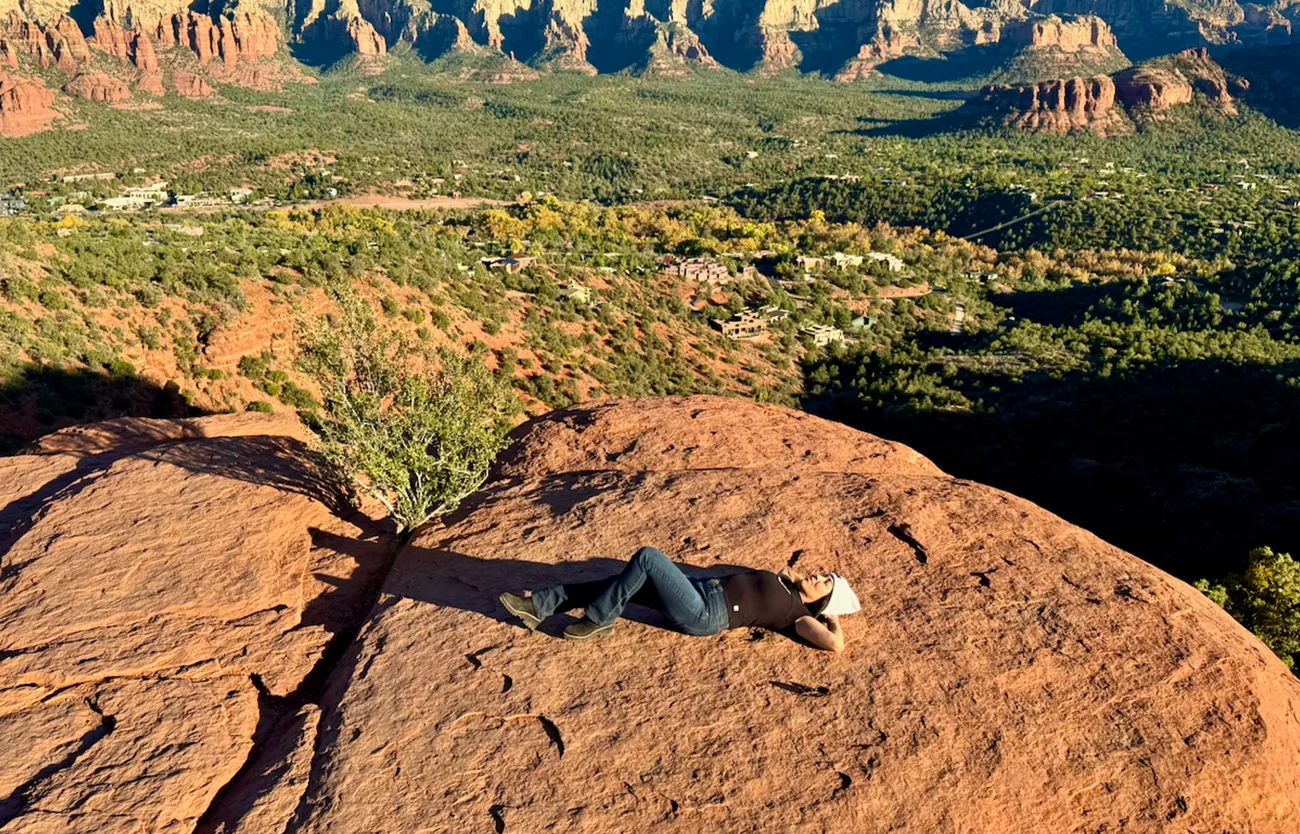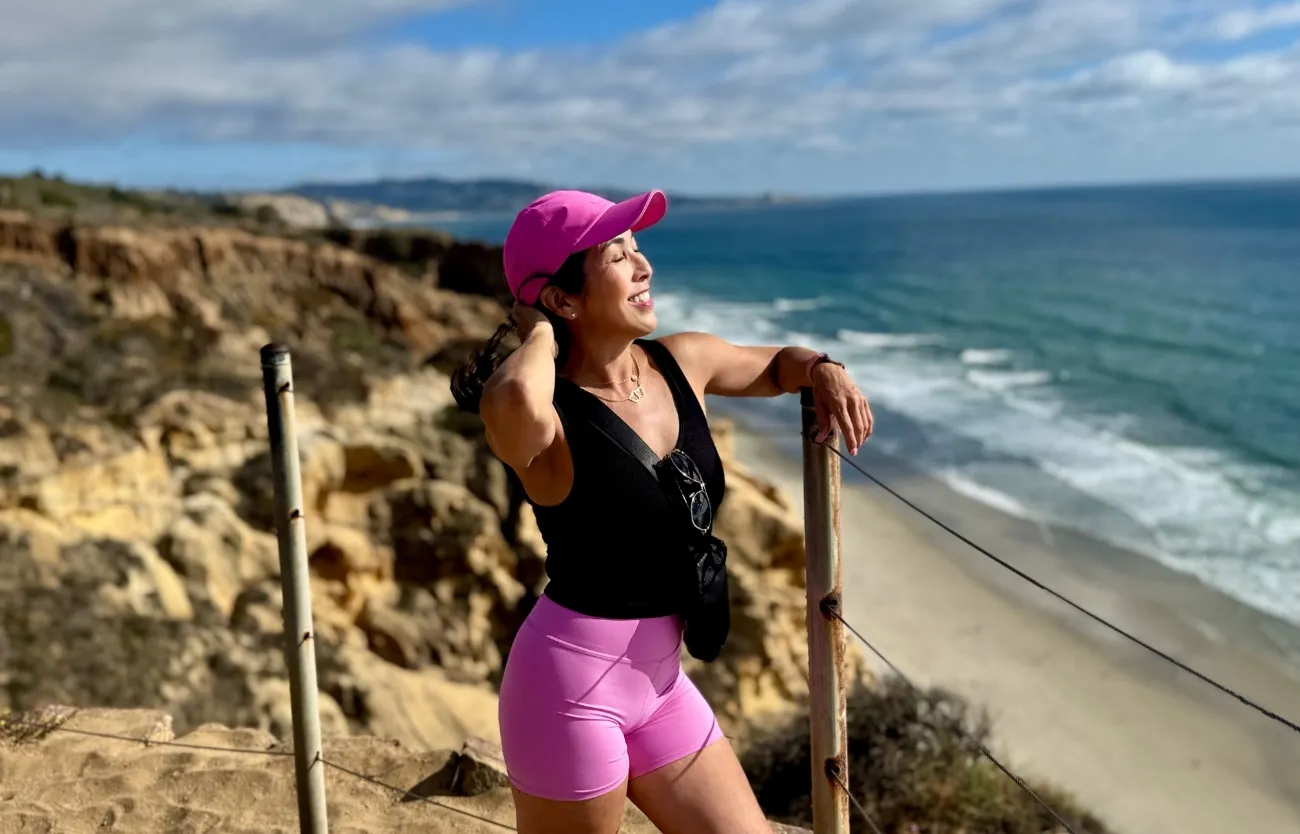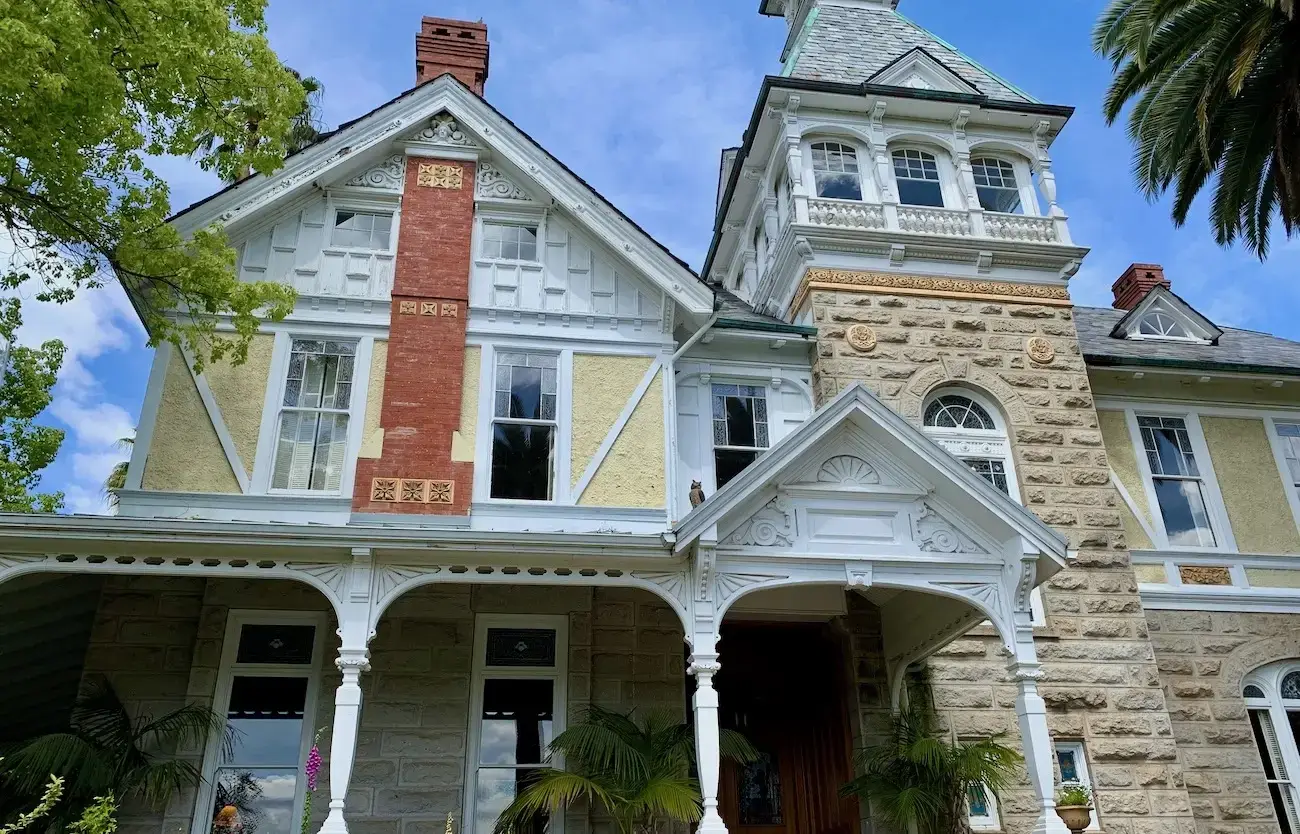
Spring Mountain Vineyard: Private Wine Tasting
The Napa Valley wineries are a favorite quick getaway for California residents. The Live Fit Magazine crew visited in March 2015. We were delighted to meet Lindsay McArdle at Spring Mountain Vineyard. It’s a gorgeous property and delicious wine. The best way to do a tour is in their private tasting room. It’s relaxing and completely enjoyable. You have plenty of time to ask questions, learn, and sip on some excellent signature wines.
Be sure to leave room in the day to travel up the mountain by car to the beautiful vistas.
Here’s some more information from their website.
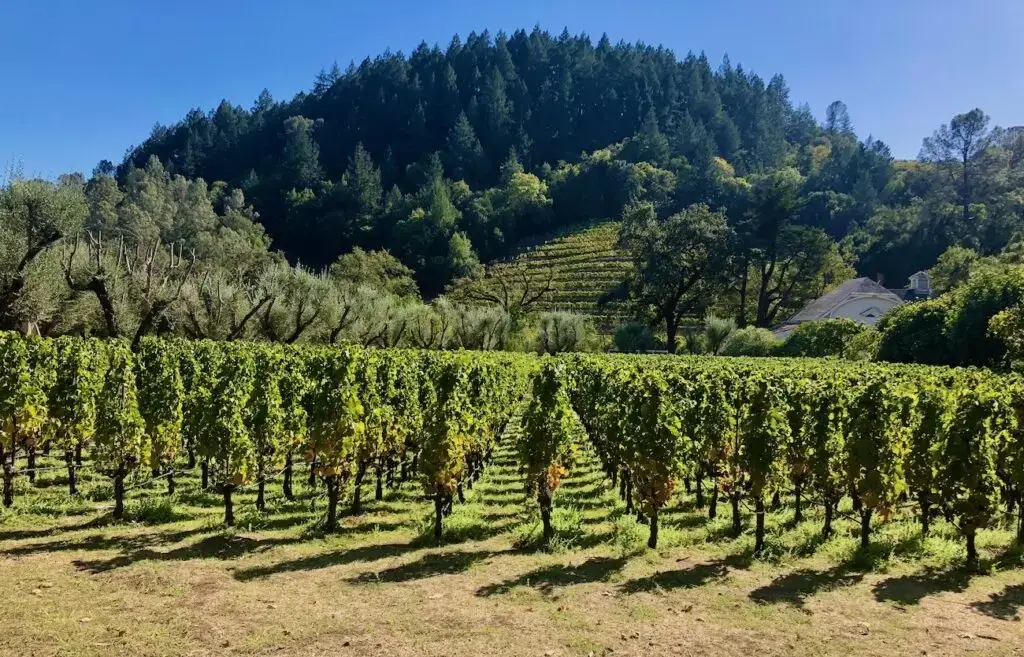
Spring Mountain Vineyard is an 845-acre estate on the eastern slopes and lower half of Spring Mountain. It extends from 400 feet above sea level to about 1450 feet at the top of the property. There are about 135 different vineyard blocks scattered over the estate, totaling 226 acres. Each has a different elevation, soil, and exposure to the elements and each block produces something unique. This great diversity of steep hillside plantings is the source of consistent, powerful, and distinctive red wines.
Four adjoining properties on Spring Mountain were acquired, each featuring a vineyard and a winery. They were Spring Mountain Vineyards (Miravalle) 257 acres, Chateau Chevalier 120 acres, Streblow Vineyards (Alba) 33 acres, and Draper Vineyards (La Perla) 435 acres.
These wine properties were first developed in the late 19th Century and, though boundaries and names had changed in the intervening years, much of what was done a century earlier remains evident today.
Unlocking the Secrets of Spring Mountain Vineyard’s Signature Wines: A Deep Dive into the Elivette
Nestled in the scenic Napa Valley, Spring Mountain Vineyard offers a unique escape. It’s a place where you can relax and enjoy exceptional wines. Their private tastings provide an intimate experience. You’ll have time to ask questions and savor their signature wines. Plan your visit and discover the beauty for yourself! And if you’re looking for other getaway ideas, be sure to check out Live Fit Magazine’s Destinations.
Today, we’re taking a closer look at Spring Mountain Vineyard’s signature wine: the Elivette. What’s in a name? What blend of grapes creates its unique character? How does the vintage year affect its taste and aging potential? Let’s find out!
The Elivette: More Than Just a Name
What makes a wine truly special? Is it the grapes, the region, or the winemaking process? At Spring Mountain Vineyard, they believe it’s all of these things and more.
From “Reserve” to a Signature
Have you ever wondered about the term “Reserve” on a wine label? In the United States, it isn’t as regulated as you might think. Unlike Spain and Portugal, there aren’t strict rules governing its use. This means any winery can label a wine as “Reserve,” even if it doesn’t meet specific standards.
Because of this loose regulation, the term “Reserve” has become overused. To set themselves apart, Spring Mountain Vineyard decided to create their own unique name. They wanted a name that truly represented their high-end wine.
The Story Behind “Elivette”
So, where does the name “Elivette” come from? It’s a tribute to the owner’s parents, Ellie and Evet. This personal touch adds another layer of meaning to the wine. The Elivette is consistently cabernet sauvignon-based and a blend of Bordeaux varietals. While the blend changes each year, these core elements remain the same. This ensures a consistent character that reflects the vineyard’s style.
Dissecting the 2009 Elivette: A Vintage Defined by Drought
Each vintage tells a story. It reflects the unique weather conditions and challenges of that particular growing season. The 2009 Elivette is no exception.
The 2009 Blend
The 2009 Elivette boasts a complex blend of grapes:
55% Cabernet Sauvignon
22% Cabernet Franc
12% Petit Verdot
10% Merlot
1% Malbec
This combination creates a wine with depth, complexity, and layers of flavor.
The Impact of a Drought Year
2009 was a drought year in Napa Valley. This meant warmer temperatures and less rainfall. These conditions affected the grapes in several ways. The grapes were smaller, with a higher skin-to-pulp ratio. This resulted in greater extraction of color and flavor during winemaking. The warmer evenings also led to lower acidity levels. This created a more fruit-forward wine, approachable even in its youth.
Napa Valley’s Unique Climate Advantage
Napa Valley benefits from a significant temperature swing during the growing season. Temperatures can range from 85-95°F during the day to 50-55°F at night. This fluctuation is ideal for grape development. The heat helps ripen the fruit and develop sugars. The cool nights slow down ripening and allow acidity to develop. This creates well-balanced grapes. Even in a warmer year like 2009, this temperature swing helps maintain some balance.
Aging Potential
The 2009 Elivette is delicious now, but how will it age? It will age gracefully, but it may not have the same longevity as vintages from cooler years, such as:
2007
2006
2005
2010
2011
These cooler years typically have higher acidity, which contributes to longer aging potential.
The Art of Vintage Variation: Drinkers vs. Investors Wines
Have you heard the saying, “Good vintages are for drinkers, and bad vintages are for investors?” There’s some truth to this.
The “Good” vs. “Bad” Vintage Myth
Some vintages are considered “drinkers wines.” These are approachable and enjoyable early on. Others are considered “investors wines.” These may require more time to develop and mature. However, it’s important to remember that there are no truly “bad” vintages. There are only challenging growing seasons. These challenges can sometimes lead to unexpected and beautiful results.
The 1998 Vintage: A Tale of Redemption
The 1998 Napa Valley vintage is a perfect example. Initially, critics deemed it the worst ever. They advised against buying or keeping the wine. This led to drastic price reductions. However, years later, critics reversed their opinion. They called it the best “sleeper vintage” ever. It simply needed more time to develop in the bottle.
While not every vintage will experience such a dramatic turnaround, it highlights an important point. Challenging vintages can still produce exceptional wines with time.
The 2006 Vintage
The 2006 vintage, which was cool and wet, is turning out to be a beautiful vintage.
The Legacy of Spring Mountain Vineyard: Beyond the Bottle
Spring Mountain Vineyard’s commitment to quality extends beyond the grapes and the winemaking. The very caves where the wine ages are a testament to their dedication.
The Cave’s Construction
The original section of the wine cave took five years to dig, extending 90 feet into the earth. In 1998, an additional 22,000 feet of cave space was added. This expansion took approximately two years to complete. These caves provide a consistent temperature and humidity. This is crucial for the aging and development of the wines.
Deciphering the “When to Open” Equation
So, how do you know when to open a bottle of wine? There are four key factors to consider:
Varietal
Region
Growing season
Winemaker
Understanding these factors for every wine can be complex. What should you do?
Seeking Expert Advice
When in doubt, don’t hesitate to ask the experts. The Spring Mountain Vineyard tasting room is a valuable resource.
The Tasting Room Advantage
The tasting room staff can offer personalized recommendations. They can provide specific advice on when to open your bottles of Elivette. They can help you understand the nuances of each vintage. Calling the tasting room is always a great option!
Final Thoughts
Spring Mountain Vineyard’s Elivette is more than just a wine. It’s a story of family, dedication, and the unique terroir of Napa Valley. Each vintage offers a glimpse into the challenges and triumphs of the growing season. Whether you’re a seasoned wine collector or a casual enthusiast, the Elivette is sure to impress. Cheers to discovering the hidden gems within each bottle!
Note: the transcript was completed with computer voice recognition software; please excuse the minor errors in punctuation and grammar.
Video Transcript
Lindsay McArdle:
And I am going to go through each one of the wines, but when I move on to the next one, please don’t feel rushed to finish what’s in your glass. The sign of a fine wine is it should taste different from the first sip in the glass till the last sip and the first glass in the bottle to the last glass in the bottle as it’s getting more oxygen and starting to open up. So once all the wines are poured, it’s really fun to go back and forth. And we’re going to be playing with some vintages here as well, so you can kind of see the progression of our wines. So I’m actually going to start you off with our 2009 Elivette. Elivette is what we consider our reserve wine or our signature wine. I’m actually going to grab this big bottle here. This was the original label of the Elivette
It had reserve on there, but reserve is not a term that is regulated here in the United States when it comes to labeling. Actually, Spain and Portugal are the only two countries that regulate the use of the word reserve holds a lot of weight in Italy and in Chile. But again, anything that’s exported with reserve on it doesn’t mean that it followed any specific wine-making standards. So, people started to become really liberal with the word reserve. But again, since it’s not regulated, you can put it really on anything. If you go to a small winery and they refer to something as the reserve, it’s saying that that’s their high-end wine. But again, since it’s not regulated, people started to use it very liberally. It was kind of starting to lose some of its luster. So, our owner decided to come up with a proprietary name so that we have more of a signature wine, and he came up with eVet.
Elivette is a combination of his parents’ names, Ellie and Yvette. It’s always cab-based and it’s always a blend of Bordeaux varietals that will never change, but the blend does change every year. 55% cab, 22% Cab Franc, 12% petite verdot 10% merlott, and 1% Malbec. So quite the blend in oh nine and then oh nine was actually considered to be a drought year and a hot year, not the extreme of what we saw last year. Last year was very extreme heat all through the winter, spring, summer actually into harvest, because harvest started about three weeks earlier than it typically does in 2009. It was a hot year, but again, not the extremes. So what happened was that the grapes that came in because of the drought were real teeny tiny. So you had a great skin-to-pulp ratio. Didn’t really have to beat up the skins much to get great extraction of color and flavor.
And then because of the heat, the evenings stay a little bit warmer, so you don’t end up with as much acidity. So it makes it a very fruit-forward vintage and then a vintage really approachable in its youth. One of the great things about Napa Valley and the grape growing process here is that during our growing season, we get anywhere from about a 30 to 40-degree temperature swing on a daily basis. So it’ll be anywhere from about 85 to 95 degrees in the day and then drop down to about 55, 50 degrees at night. It’s good for the grapes because the heat in the day develops the sugars and ripens the fruit, and then the cool temperatures slows down ripening at night and allows the acid to develop. So you end up with a really well-balanced scrape. So when you have a warmer year like oh nine, you don’t have as much acidity.
So it makes a vintage that’s really approachable in its youth right out of the gate oh nine will age gracefully and beautifully. It’s just not going to have the longevity of say, a vintage like oh 7, 0 6 0 5, or 2010 and 2011, which were really cool years. Then those will have more acidity to them. I actually read a great article the other day that was saying that the good vintages are the drinkers wines and the bad vintages are the investors’ wines. Now, there are really no bad vintages here. There are just very challenging growing seasons, but that can really turn around. 1998. Vintage is the perfect example of that. When it was first released, all the critics said it was the worst vintage Napa Valley had ever produced. Told people not to buy it, and then if you made it, you might as well dump it. So a lot of people had flash sales, like 50% off cases and just tried to push through the wine. And then I think it was about three years ago, they recanted and said that it was the best sleeper vintage Napa Valley has ever had. It just took a lot of time to turn around in the bottle, but it did not every vintage is going to do that, but often they do. 2006, which was a challenging year, it was cool and wet is turning out to be a beautiful vintage.
The original section of the cave that’s behind you took five years for them to dig 90 feet. And then in 1998, our current owner decided to add 22,000 square feet of cave space, and that took about two years. There are four factors in deciding when to open a bottle of wine. It’s the varietal, the region that it came from, the growing season that they had, and the winemaker. Now that is a lot to know about each individual wine. So it’s always my recommendation to just call the tasting room.
Hi, I’m Phoebe Chongchua—founder of Live Fit Magazine. I created this space to blend my love of travel, storytelling, and wellness into one curated destination. Live Fit is about living well in every sense—exploring new places, staying curious, and finding balance on the road and at home. I’m especially drawn to immersive, active travel—think hikes with a view, bike rides through wine country, and experiences that connect you to a place and its people. Thoughtful, luxurious travel, good food, and a touch of style—that’s what Live Fit Magazine is all about.
